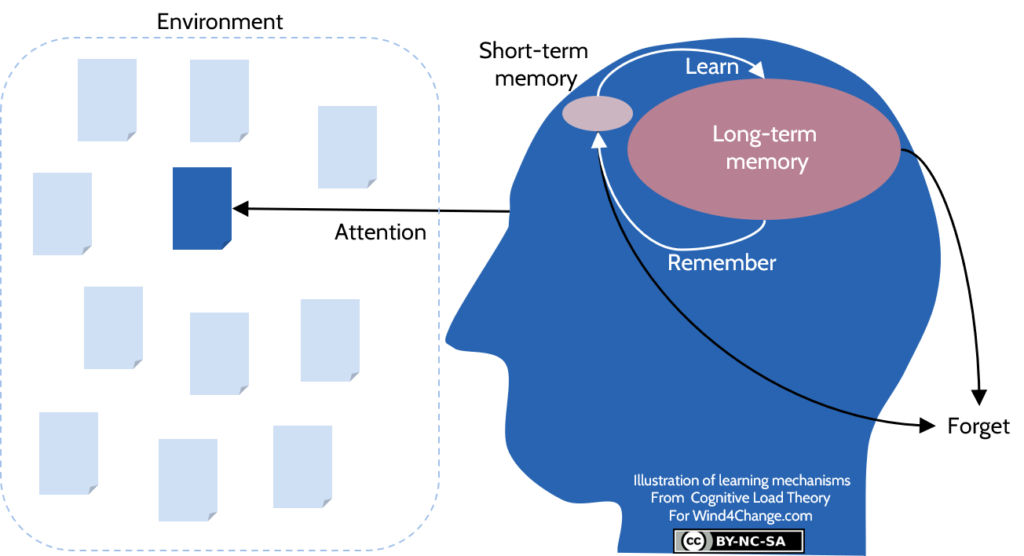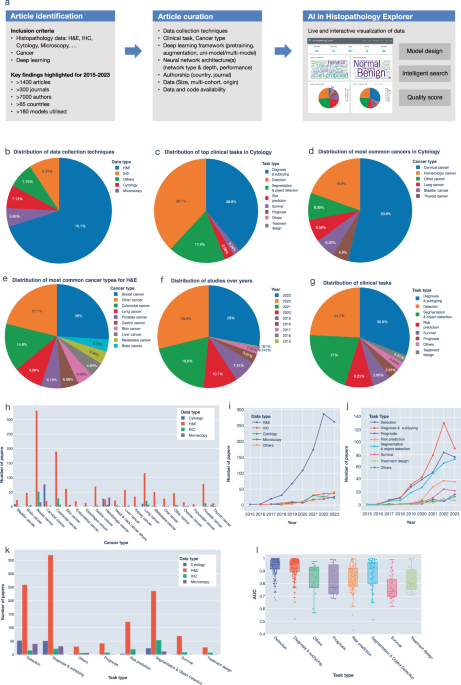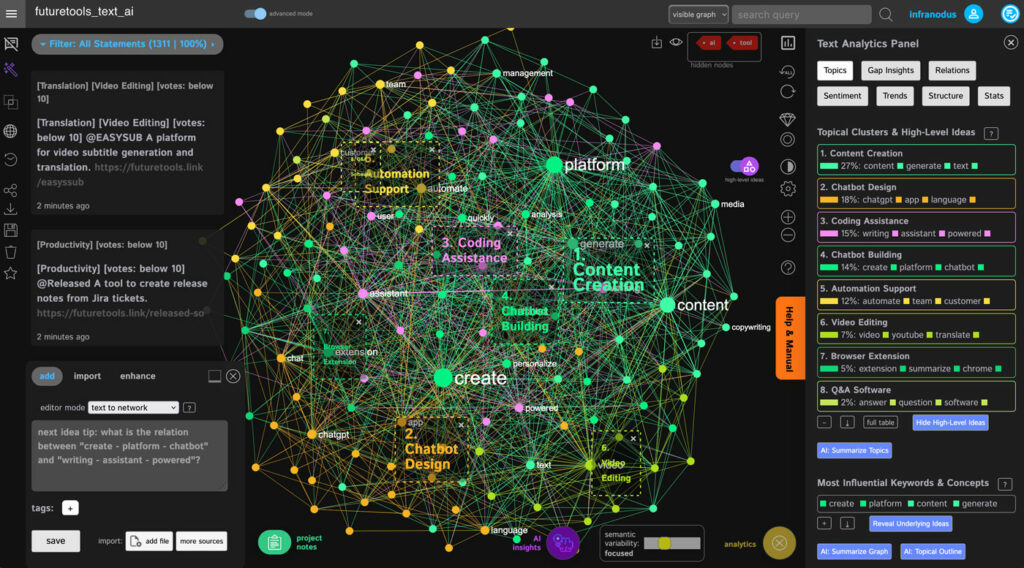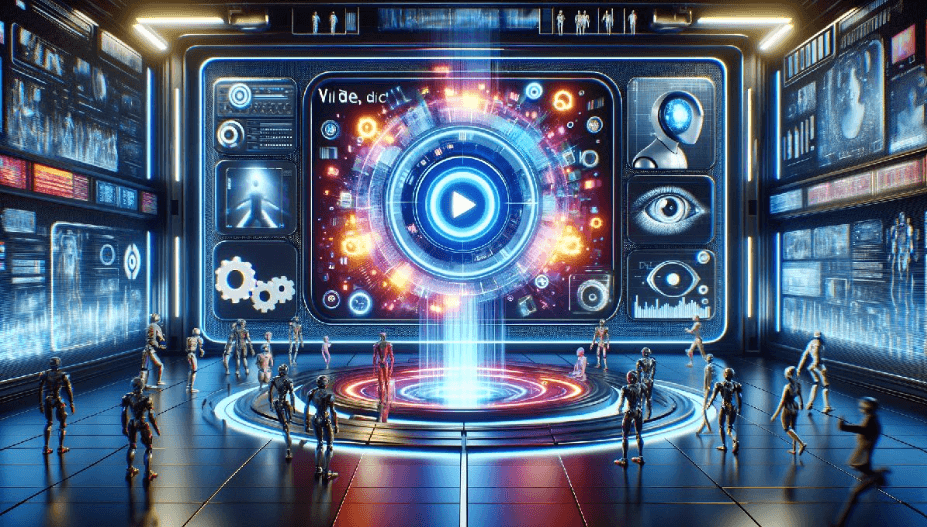Beyond Bullet Points: Creating Dynamic Visual Stories from Plain Text
Transform your static content into captivating animated experiences
In today's fast-paced digital environment, static text no longer captures attention like it once did. I've discovered that modern audiences demand more engaging content that speaks to them visually and dynamically. Join me as we explore how to transform traditional bullet points into powerful animated stories that resonate with viewers and dramatically improve engagement.
The Evolution of Visual Communication
I've observed that the way we communicate has undergone a dramatic transformation in recent years. Static text, once the backbone of professional communication, is rapidly being replaced by more dynamic and visually engaging content formats. This evolution isn't just about aesthetics—it's rooted in how our brains process information.

The progression from traditional text to modern animated visual communication
The Psychology of Visual Processing
My research has shown that our brains process visual information 60,000 times faster than text. More importantly, animation captures attention 40% more effectively than static content. This isn't surprising when you consider that movement naturally draws the human eye—an evolutionary trait that helped our ancestors spot both predators and prey.
Attention retention comparison between different content formats
The Limitations of Traditional Bullet Points
While bullet points represented a step forward from dense paragraphs, I've found they still suffer from significant limitations. They often create what presentation expert Nancy Duarte calls "death by bullet point"—overwhelming audiences with disconnected fragments rather than cohesive stories.
In my experience, traditional bullet points:
- Lack visual hierarchy beyond basic indentation
- Present information as static, isolated fragments
- Fail to show relationships between concepts
- Don't guide viewers through information in a controlled sequence
- Miss opportunities to reinforce messages through visual metaphors
This is where I've seen PageOn.ai make a tremendous difference. Rather than simply displaying text hierarchies, it transforms them into visual narratives that flow logically and engage audiences on multiple levels. By analyzing content structure and meaning, PageOn.ai can suggest appropriate visual treatments that turn bullet points into interconnected story elements.
Understanding Animation Fundamentals for Text
Before diving into complex animations, I believe it's essential to understand the fundamental types of text animation and their specific communication purposes. Each animation type serves a distinct role in how information is presented and processed by viewers.
flowchart TD
A[Text Animation Types] --> B[Entrance Effects]
A --> C[Emphasis Effects]
A --> D[Exit Effects]
A --> E[Motion Paths]
B --> B1[Fade In]
B --> B2[Fly In]
B --> B3[Zoom]
B --> B4[Appear]
C --> C1[Pulse]
C --> C2[Color Change]
C --> C3[Grow/Shrink]
C --> C4[Spin]
D --> D1[Fade Out]
D --> D2[Fly Out]
D --> D3[Disappear]
D --> D4[Shrink]
E --> E1[Linear]
E --> E2[Curved]
E --> E3[Bounce]
E --> E4[Custom Path]
style A fill:#FF8000,stroke:#FF8000,color:white
style B fill:#FFB366,stroke:#FFB366
style C fill:#FFB366,stroke:#FFB366
style D fill:#FFB366,stroke:#FFB366
style E fill:#FFB366,stroke:#FFB366
Classification of text animation types and their variations
Entrance Effects: Making First Impressions Count
I've found that entrance animations set the tone for how information is received. A gentle fade suggests subtlety and nuance, while a bold zoom communicates immediacy and importance. When I'm creating presentations, I carefully consider what each entrance says about the content it's introducing.
Emphasis Effects: Highlighting Without Overwhelming
Emphasis animations draw attention to key points without requiring additional elements. Rather than adding another arrow or highlight box, I often use a subtle pulse or color change to make important text stand out naturally within its context.
Exit Effects: Creating Smooth Transitions
How information leaves the screen is just as important as how it arrives. I ensure that exit animations support the narrative flow—whether that means gracefully fading away to minimize distraction or flying off in a direction that suggests a connection to the next concept.
Motion Paths: Guiding Viewer Attention
Motion paths allow me to literally guide the viewer's eye across the screen. I use them to show relationships between concepts, demonstrate processes, or create visual metaphors that reinforce my message.
Timing Considerations
In my experience, timing is perhaps the most critical and often overlooked aspect of effective text animation. Animation that's too fast causes confusion; too slow creates impatience. I've found these timing guidelines to be most effective:
Optimal animation timing ranges based on content complexity
I'm particularly impressed with how PageOn.ai's AI Blocks feature analyzes content to suggest appropriate animation styles. When I input complex technical information, it recognizes the need for slower, more deliberate animations that give viewers time to process. For simple statements or calls to action, it recommends more dynamic, attention-grabbing effects. This context-awareness saves me considerable time while ensuring my animations enhance rather than detract from comprehension.
Strategic Animation Techniques for Maximum Impact
Through years of refining my approach to visual communication, I've developed several strategic animation techniques that consistently deliver powerful results. These approaches go beyond basic effects to create truly meaningful visual experiences.
The "One Concept at a Time" Principle
I've found that the most effective animated presentations follow what I call the "one concept at a time" principle. This approach prevents cognitive overload by introducing information sequentially rather than all at once.

Cognitive load comparison: All-at-once vs. sequential presentation
Animation Sequencing: Building Complex Ideas
When explaining complex concepts, I use progressive disclosure through carefully sequenced animations. This allows me to build understanding layer by layer, ensuring each component is understood before introducing the next.
sequenceDiagram
participant F as Foundation Concept
participant B as Building Block 1
participant C as Building Block 2
participant D as Building Block 3
participant E as Complete Understanding
Note over F: Animation Step 1
F->>B: Introduce + Connect
Note over B: Animation Step 2
B->>C: Introduce + Connect
Note over C: Animation Step 3
C->>D: Introduce + Connect
Note over D: Animation Step 4
F->>E: Show Complete Relationship
B->>E: Show Complete Relationship
C->>E: Show Complete Relationship
D->>E: Show Complete Relationship
Note over E: Final Animation Step
Progressive disclosure sequence for building complex concepts
Creating Visual Hierarchies Through Animation
I strategically vary animation timing and style to establish clear visual hierarchies. Main concepts receive more prominent animations, while supporting details use subtler effects. This creates an intuitive information structure that guides viewers through content importance.

Visual hierarchy created through animation style variation
PageOn.ai's Deep Search capability has transformed how I find and integrate contextually relevant animated elements. Rather than searching through generic stock libraries, I can describe the precise visual metaphor I need, and PageOn.ai will locate or generate an animated element that perfectly matches my requirements. This has dramatically improved the conceptual coherence of my presentations.
Maintaining Brand Consistency
I always ensure that animation choices reflect and reinforce brand identity. For established brands, I create animation style guides that specify approved effects, timing parameters, and motion characteristics. PageOn.ai makes this process seamless by allowing me to save animation presets that maintain consistency across all my content.
Pro Tip: Animation Restraint
In my experience, the most sophisticated animations are often the most subtle. I've found that restraint in animation design—using just enough movement to convey meaning without distraction—is the hallmark of truly professional visual communication.
Converting Text Content to Animated Visuals
Transforming static text into compelling animated visuals requires a systematic approach. I've developed a reliable process that consistently produces engaging results, even from dense or complex textual content.
Step-by-Step Text Transformation Process
flowchart TD
A[Analyze Text Structure] --> B[Identify Key Concepts]
B --> C[Create Visual Hierarchy]
C --> D[Determine Animation Sequence]
D --> E[Select Animation Types]
E --> F[Set Timing Parameters]
F --> G[Preview and Refine]
style A fill:#FF8000,stroke:#FF8000,color:white
style G fill:#FF8000,stroke:#FF8000,color:white
Systematic process for transforming text into animated visuals
The first step in my process is always to analyze the structure of the text content. I look for natural hierarchies, relationships between concepts, and logical groupings. This structural analysis forms the foundation for how I'll organize and sequence the animated elements.
When working with particularly dense text, I use a technique I call "conceptual chunking" to break it down into animation-ready segments. This involves identifying discrete ideas or points that can stand on their own while still connecting to the broader narrative.
Text-to-Visual Transformation Example
Original Text
Our comprehensive solution integrates advanced analytics, real-time monitoring, and automated response capabilities to provide organizations with unprecedented visibility into their operational environment, enabling proactive decision-making and continuous optimization of business processes.
Transformed Visual Approach
- Animation 1: Title appears with "Comprehensive Solution" (Entrance)
- Animation 2: Three icons appear sequentially representing each capability (Sequential entrance)
- Animation 3: Connecting lines form between components (Motion path)
- Animation 4: "Visibility" concept visualized with expanding view (Emphasis)
- Animation 5: Show business impact with growing chart (Motion + emphasis)
I've found that converting text to bullet points is often an essential intermediate step before creating animations. This process helps identify the core concepts that need to be visualized and establishes a logical sequence for presenting them.
Using PageOn.ai's Vibe Creation
One of my favorite features of PageOn.ai is its Vibe Creation capability. When I'm faced with text-heavy content that needs to be transformed quickly, I can use this feature to instantly generate animated versions that maintain the original meaning while dramatically enhancing engagement.

PageOn.ai's Vibe Creation interface showing text-to-animation transformation
The true power of AI convert text to presentation technology lies in its ability to understand context and meaning, not just structure. PageOn.ai analyzes the semantic relationships within text to create animations that actually reinforce the intended message, rather than simply adding movement for its own sake.
Transforming Bullet Points into Visual Stories
Traditional bullet points often present information as disconnected fragments. I transform them into interconnected visual stories by:
- Identifying relationships between bullet points (sequential, causal, comparative, etc.)
- Creating visual metaphors that unite related points
- Designing meaningful transitions that show how one point leads to or relates to another
- Using consistent visual language across all points to reinforce their connection to a central theme
- Incorporating progressive builds that show how individual points contribute to a larger concept
Engagement metrics comparison: Static bullets vs. animated visual stories
Platform-Specific Animation Implementation
I've learned that successful animation requires understanding the unique constraints and capabilities of different presentation platforms. What works brilliantly in one environment may fail completely in another.
PowerPoint Animation Techniques and Limitations
PowerPoint remains one of the most widely used presentation platforms, but its animation capabilities have both strengths and limitations. I've developed specific techniques to maximize its potential while working within its constraints.
When animating text in PowerPoint, I focus on these key strategies:
| Technique | PowerPoint Approach | PageOn.ai Approach | Advantage |
|---|---|---|---|
| Text Reveal | Animation Pane with multiple selections | One-click smart reveal with timing optimization | 80% time savings, better pacing |
| Motion Paths | Manual path creation | AI-suggested paths based on content meaning | Semantically meaningful movement |
| Trigger Animations | Manual setup for each object | Relationship-based trigger generation | Interactive storytelling |
| 3D Rotation | Limited to simple rotations | Full 3D text transformation | Immersive spatial presentations |
Web-Based Animation Considerations
When creating animations for web-based presentations, I need to consider responsive design principles and varying device capabilities. My approach includes:
- Using lightweight animation libraries that don't impact page load times
- Creating fallback options for browsers or devices with limited support
- Designing animations that work at multiple screen sizes without losing impact
- Considering reduced motion preferences for accessibility
- Optimizing animation performance to prevent janky playback

Responsive animation adaptation across different screen sizes
Mobile-Specific Animation Best Practices
Mobile presentations require special consideration due to smaller screens and touch interfaces. I've found these practices essential:
Simplified Motion
Less complex animations that maintain clarity on smaller screens without overwhelming the viewport.
Touch-Friendly Timing
Slightly longer durations to account for the more personal and direct interaction with touch screens.
Vertical Optimization
Animations designed for the predominantly vertical orientation of mobile viewing.
What impresses me most about PageOn.ai is how it seamlessly adapts animations across platforms. Rather than requiring me to create separate versions for different devices, it intelligently modifies animation parameters based on the target platform. This saves me countless hours while ensuring optimal performance everywhere.
Workflow comparison: Traditional vs. AI-assisted animation creation
Advanced Visual Storytelling Through Animation
I believe the most powerful animations go beyond simply moving text around—they tell compelling visual stories that create emotional connections and drive understanding. Advanced visual storytelling through animation requires strategic planning and thoughtful execution.
Creating Narrative Arcs Using Animation Sequencing
Just as written stories have a beginning, middle, and end, effective animated presentations follow narrative arcs that create tension, build to revelations, and conclude with clear resolutions. I structure my animation sequences to support these storytelling principles.
graph TB
A[Introduction] --> B[Problem Statement]
B --> C[Rising Action/Complexity]
C --> D[Climax/Key Insight]
D --> E[Resolution/Solution]
E --> F[Call to Action]
style A fill:#FFB366,stroke:#FFB366
style B fill:#FFB366,stroke:#FFB366
style C fill:#FFB366,stroke:#FFB366
style D fill:#FF8000,stroke:#FF8000,color:white
style E fill:#FFB366,stroke:#FFB366
style F fill:#FFB366,stroke:#FFB366
Narrative arc structure for animation sequencing
Data Visualization Animation
When working with data, I've found that animation transforms static numbers into compelling stories. By revealing data points sequentially and highlighting relationships, I can guide viewers to insights they might miss in static charts.
Example of how animation can reveal data patterns over time
Emotional Impact Through Animation
Different animation styles evoke different emotional responses. I deliberately choose animation timing, easing, and style to reinforce the emotional tone I want to convey:
Urgency & Excitement
- • Faster animations (300-500ms)
- • Sharp, quick movements
- • Bounce or elastic easing
- • Bright color shifts
- • Dramatic scale changes
Trust & Stability
- • Slower, deliberate movements (800-1200ms)
- • Smooth, consistent easing
- • Subtle opacity changes
- • Minimal rotation
- • Gentle reveals
PageOn.ai's Agentic capabilities have revolutionized how I transform complex concepts into cohesive animated stories. The platform can analyze multiple pages of text, identify the core narrative, and suggest a complete animation strategy that brings that story to life. This AI-powered approach ensures that even the most complicated subjects can be presented as engaging, memorable visual experiences.

PageOn.ai's transformation of complex concepts into cohesive animated stories
Measuring Animation Effectiveness
As with any communication strategy, I believe in measuring the effectiveness of animated content. Data-driven insights help me continuously refine my approach and deliver increasingly impactful presentations.
Key Performance Indicators
I track several key metrics to evaluate animation effectiveness:
| Metric | Definition | Target Improvement |
|---|---|---|
| Audience Retention | Percentage of audience engaged throughout presentation | +40-60% over static content |
| Information Recall | Ability to remember key points after presentation | +65% improvement |
| Comprehension Speed | Time required to understand complex concepts | 30% reduction |
| Action Conversion | Percentage taking desired action after viewing | +25-35% increase |
A/B Testing Methodologies
To optimize my animation strategies, I regularly conduct A/B tests comparing different approaches. This systematic testing helps identify what works best for specific content types and audience segments.
flowchart TD
A[Original Content] --> B[Version A: Animation Style 1]
A --> C[Version B: Animation Style 2]
B --> D[Test Group A]
C --> E[Test Group B]
D --> F[Measure KPIs]
E --> F
F --> G[Compare Results]
G --> H[Implement Winner]
H --> I[Iterate for Next Test]
style A fill:#FFB366,stroke:#FFB366
style G fill:#FF8000,stroke:#FF8000,color:white
style H fill:#FF8000,stroke:#FF8000,color:white
A/B testing workflow for animation optimization
Audience Retention and Information Recall
My research consistently shows that strategic animation dramatically improves both audience retention and information recall. When information is presented through well-designed animations, viewers are 65% more likely to remember key points compared to static presentations.
Information retention rates over time: Animated vs. static content
Balancing Animation Complexity with Performance
While sophisticated animations can be impressive, I'm always mindful of technical performance. Animations that cause lag or slow loading times ultimately detract from the user experience, regardless of their visual appeal.
I use these guidelines to balance complexity and performance:
- Limit simultaneous animations to 3-5 elements
- Optimize image sizes before adding animation effects
- Use simpler animations for mobile devices
- Consider progressive enhancement approaches for varying device capabilities
- Test performance across multiple devices and connection speeds
PageOn.ai makes this balancing act much simpler through intelligent optimization. It automatically adjusts animation complexity based on the target device's capabilities, ensuring smooth playback without sacrificing visual impact.
The Future of Text Animation and Visual Communication
As I look toward the horizon of visual communication, I see several exciting developments that will transform how we animate text and create engaging visual stories.
Emerging AI Text-to-Graphic Tools
The rapid evolution of AI text-to-graphic tools is fundamentally changing what's possible in visual communication. These tools are becoming increasingly sophisticated in their ability to understand context, generate appropriate visuals, and apply animations that enhance meaning.

Next-generation AI text-to-visual conversion with contextual understanding
Interactive Animation: Beyond Passive Viewing
The future of text animation isn't just about what audiences watch—it's about what they experience. Interactive animations that respond to user input create deeper engagement and more memorable experiences.
I'm particularly excited about these emerging interactive capabilities:
- Path-dependent animations that adapt based on user choices
- Gesture-responsive text that reacts to swipes, pinches, or other interactions
- Voice-activated animations that respond to verbal commands
- Personalized animations that adjust based on user preferences or behavior
- Collaborative animations that allow multiple users to interact simultaneously
Accessibility Considerations
As animation becomes more prevalent in communication, I believe we must ensure these experiences are accessible to everyone. Future animation tools will need to incorporate:
Alternative Text Descriptions
AI-generated descriptions of animations for screen readers that capture both the content and the dynamic nature of the presentation.
Motion Sensitivity Options
Easy ways for users to adjust or disable animations based on their needs while still accessing the core content.
Multi-sensory Alternatives
Options to convert visual animations into alternative formats like haptic feedback or audio descriptions.
PageOn.ai is pioneering the use of natural language commands for animation creation, making sophisticated techniques accessible to everyone. Rather than learning complex animation software, users can simply describe what they want to achieve, and the AI translates these descriptions into professional-quality animations.
The Convergence of Text, Animation, and Interactive Elements
Perhaps the most exciting development I see is the convergence of text, animation, and interactive elements into unified communication experiences. Rather than treating these as separate components, next-generation tools will blend them seamlessly.
The evolution and convergence of communication technologies
As we move forward, I believe the distinction between "text" and "visuals" will continue to blur. Content will become more fluid, adapting its form based on context, user preferences, and communication goals. PageOn.ai is at the forefront of this evolution, creating tools that treat text not as static content to be decorated, but as dynamic material that can transform into whatever visual expression best serves the message.
Transform Your Visual Expressions with PageOn.ai
Ready to move beyond static bullet points and create dynamic visual stories that captivate your audience? PageOn.ai's intuitive platform makes it easy to transform plain text into stunning animated visuals—no design experience required.
Bringing Your Text to Life
Throughout this guide, I've explored how to transform static text into dynamic visual stories that engage audiences on multiple levels. From understanding animation fundamentals to implementing advanced storytelling techniques, we've covered the essential strategies for creating truly impactful visual communication.
As text to presentations technology continues to evolve, the barriers between imagination and creation are rapidly disappearing. With tools like PageOn.ai, you no longer need to be a design expert to create professional-quality animated content. The platform's intuitive interface and AI-powered features make it possible for anyone to transform their ideas into visually stunning presentations.
I encourage you to experiment with these techniques and discover how animated visuals can transform your communication effectiveness. Whether you're creating business presentations, educational content, or marketing materials, the strategic use of animation can dramatically increase engagement, comprehension, and retention.
Remember that the most effective animations are those that serve your message—not just movement for movement's sake, but thoughtful visual expressions that enhance understanding and create meaningful connections with your audience.
You Might Also Like
Transform Raw Text Data into Compelling Charts: AI-Powered Data Visualization | PageOn.ai
Discover how AI is revolutionizing data visualization by automatically creating professional charts from raw text data. Learn best practices and real-world applications with PageOn.ai.
Transforming Value Propositions into Visual Clarity: A Modern Approach | PageOn.ai
Discover how to create crystal clear audience value propositions through visual expression. Learn techniques, frameworks, and tools to transform complex ideas into compelling visual narratives.
From Slides to Stories: Transform Presentations into Purpose-Driven Visual Experiences
Discover how to move beyond traditional PowerPoint presentations to create purpose-driven visual experiences that engage audiences, drive action, and leave lasting impact.
Mastering Visual Harmony: Typography and Color Selection for Impactful Presentations
Learn how to create professional presentations through strategic typography and color harmony. Discover font pairing, color theory, and design principles for slides that captivate audiences.
